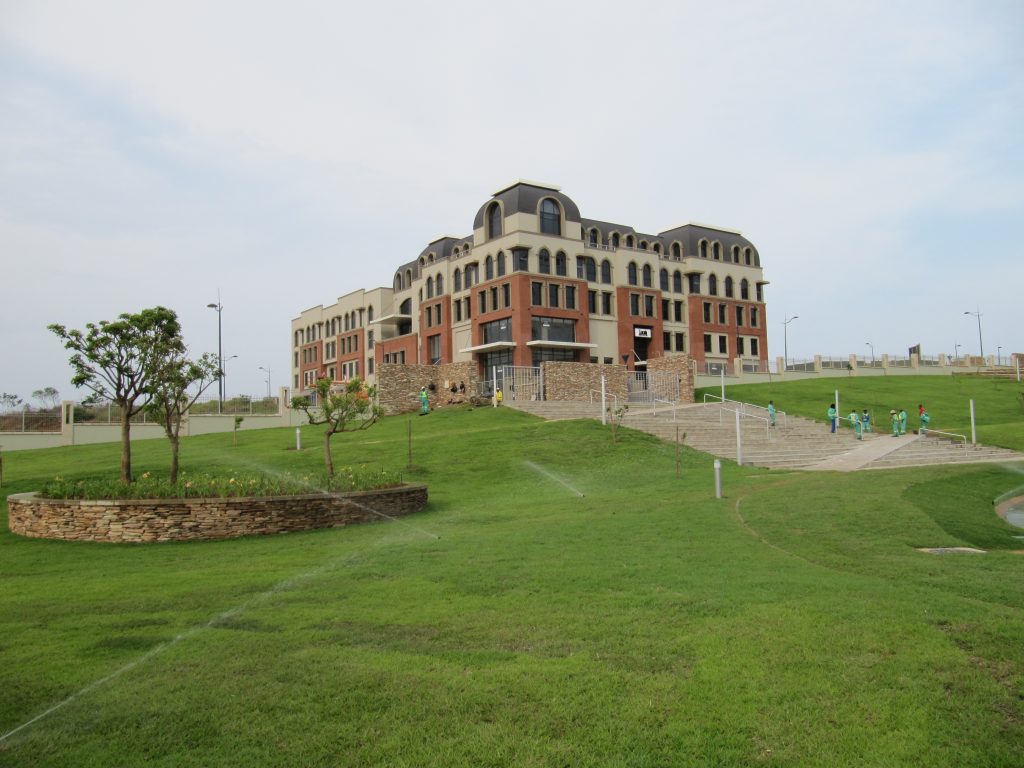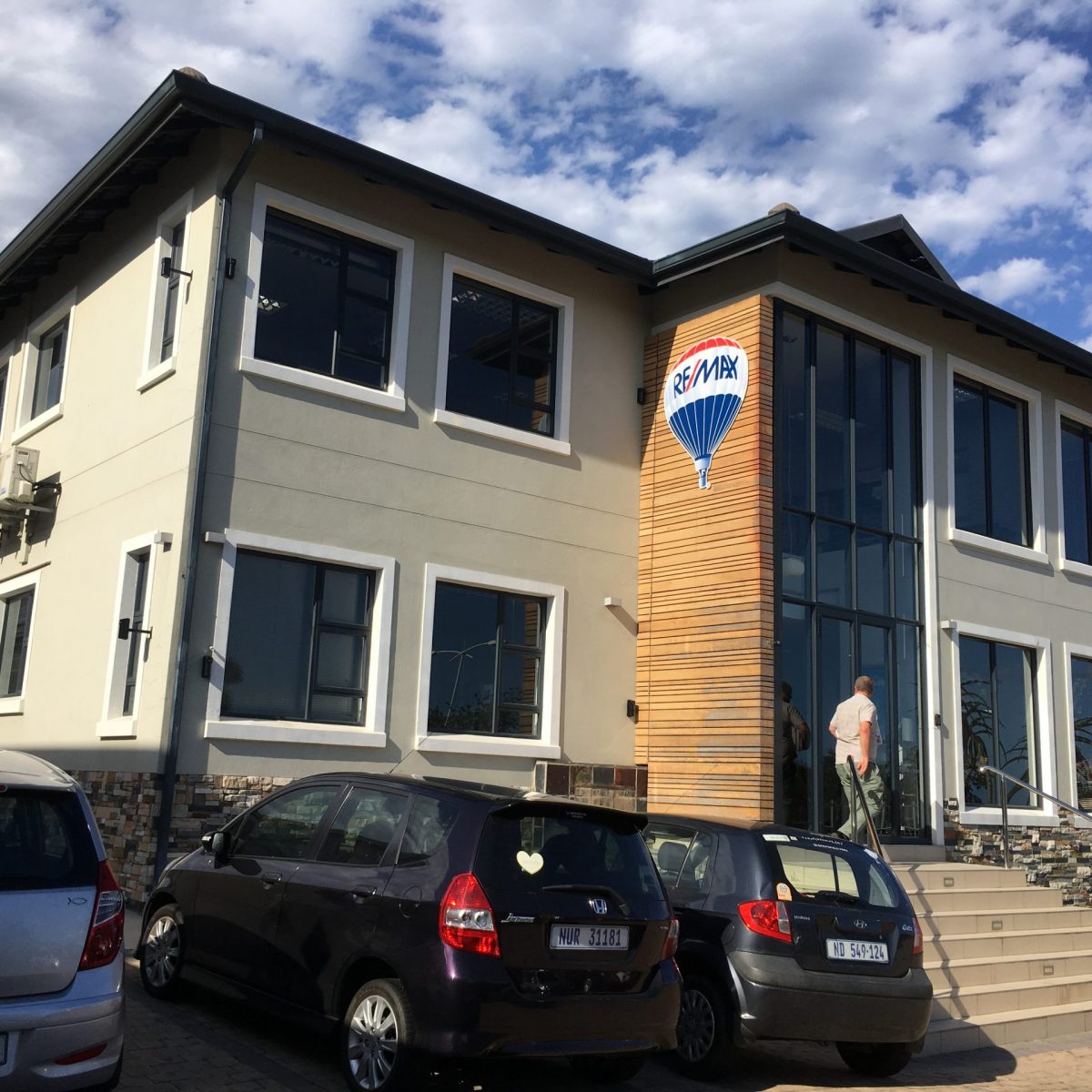
Lincoln on the Lake shoots for KZN’s first Green Star SA rating Intent on being the first Green Star SA-rated building in Kwazulu-Natal, the 6,700sqm Lincoln on the Lake mixed-use development in Durban’s upscale Parkside Precinct of Umhlanga Ridge New Town Centre is poised to raise the bar on environmental standards for commercial projects throughout SA. The project is being jointly developed by South Africa’s largest JSE listed property company Growthpoint Properties, The Louis Group and Key Developments. It has benefitted by the innovative design expertise of Tor Hanssen of THA Architects, as well as design, engineering and management consultancy WSP Green by Design. Lincoln on the Lake will be owned by Growthpoint on completion. The core principles underpinning both the design and construction of Lincoln on the Lake include environmental consciousness and sustainability. “We made it a priority to identify ways to ensure efficiency,” explains Greg de Klerk, who heads up Growthpoint’s Durban office. “Our corporate philosophy is to give preference to working with professionals that are dedicated to green building practices,” elaborates De Klerk.
When it comes to energy and it’s monitoring at Lincoln on the Lake, the lighting is controlled by an individually addressable lighting control system with addressable motion and daylight sensing switches to monitor movement and light levels. Sub-metering is provided for all substantive energy users in the building and a building management system is installed to monitor energy and water consumption. Air-cooled variable refrigerant volume systems provide an efficient means of air-conditioning Lincoln on the Lake. Ensuring the highest indoor environment quality, fresh air supply is 150% that of the minimum permissible ventilation rate legislated in the national building standard SANS 10400. Alana Shuttleworth, associate at WSP Green by Design, explains that the aim is to counteract build-up of pollutants in the space. High levels of carbon dioxide (CO2) are an indication of inadequate ventilation which can have a negative impact on the quality of breathable air. At Lincoln on the Lake CO2 sensors located at all return points to airconditioning systems to monitor levels. “This ensures delivery of optimum quantities of outside air,” notes Shuttleworth.
Further ensuring that Lincoln on the Lake’s environmental emissions are contained, only paints with low volatile organic compound (VOC) levels have been selected. VOC’s are a concern as they photo-chemically react in sunlight to cause ozone or smog. Dedicated tenant exhaust risers have been installed to remove the indoor air pollutants from printing and photocopy areas. The building has a no smoking policy and in addition there is no provision made for smoking areas inside the building As important as minimising energy consumption and pollution is the highest level of water efficiencies. Water collected from rain-water harvesting is used for toilet flushing which reduces the demand for potable water for flushing. It also reduces the negative affects of storm water run-off. Considerable savings in potable water is made by using air-cooled equipment instead of water-cooled equipment in the air-conditioning system and some 80% of the routine fire protection system test water is captured and stored on site for reuse.
Efficient fixtures such as dual flush toilets, low-flush urinals, low-flow shower heads and electronically controlled taps with flow restrictors are also used to reduce consumption of potable water. Even the materials selected for construction have contributed to the success of this example of green building. The quantity of Portland cement has been reduced 30% by replacing it with flyash, an industrial waste product. “Some 20% of the total contract value is represented by materials or products used in the construction of the project that have been sourced from within 400km of the site,” Shuttleworth notes. The design also encourages the use of alternative forms of transport. A full 5% of the car parking spaces are dedicated for use by alternative fuel vehicles and a further 5% of the car parking spaces are dedicated for use by motorbikes, mopeds and scooters.
Bicycle storage facilities are provided for 6% of the building staff. Practical as well as thoughtful, the building includes showers, change facilities and lockers for cyclists. Additional bicycle storage facilities are also provided for visitors to the building. As a result of its exceptional location, Lincoln on the Lake also benefits from its proximity to important services and facilities. The municipal contracted bus service runs at an average interval of 10 minutes during peak hours from a bus stop within 500m of the development, it is situated within 400 metres of Gateway Theatre of Shopping. All these empower the buildings occupants to reduce their carbon footprints.
“A roof garden is incorporated in the central courtyard of the site. This will improve the ecological value of the site and will aid in reducing storm-water run-off. Nearly 90% of the office area has a direct line of sight to external views which has been achieved by means of a narrow floor plate and strategically positioned vision glazing,” points out Shuttleworth.
Committed to the environment on every level, the contractor has aimed to reuse or recycle 30% of all construction waste in order to reduce the amount of waste from going to landfill.
Lincoln on the Lake’s superb position in this vibrant node together with its sophisticated design and quality premises create an ideal synergy with Growthpoint’s commitment to environmental sustainability. As a result, the company has chosen this as the new location for its own regional office. The development underscores the fact that environmental sustainability does not mean sacrificing traditional principles of good development. As with all Growthpoint projects, unmatched location combined with superb access and pleasing surroundings are paramount.
On the doorstep of Gateway Theatre of Shopping and the Umhlanga New Town Centre, Lincoln on the Lake offers all the benefits of mixed uses in an exclusive urban node.
Its immediate surroundings include the welcoming but highly secure C.J. Saunders Park, which boasts an amphitheatre; scenic lake and grassy leisure spot with shady trees. Lincoln on the Lake occupants will enjoy a view over the park, as well as the art and music festivals envisaged to be held once completed in July 2009.
The building itself is a pleasing modern take on the neo-classical style of architecture. Architect Tor Hansson explains that this timeless designemphasises light and space, combining time-honoured design principles with a modern green mindset.
Set on a strong base, distinctive to this style, Lincoln on Lake’s doublevolume main foyer is marked by is striking steel canopy on the exterior, guiding visitors in through electronically controlled access doors. Incorporating the highest quality finishes, Lincoln on the Lake features full body porcelain tiles, caesarstone counters. All doors are a deep mahogany with architraves, featuring access control.
Within this, the design also manages to meet the commercial demand to provide flexible office space allowing both single and multiple tenant environments on each floor. Hansson points out that this allows the building to easily accommodate a variety of tenants with different size requirements. Lincoln on the Lake is likewise well-placed to take advantage of significantly improved road access once the planned Cornubia Interchange off the N2 freeway gets underway.
An important consideration for any business, state-of-the-art security is in place as a priority and incorporates round-the-clock access control, electronically-controlled front doors in the building foyer, dedicated patrols and a night-time secure state.
The vision for Lincoln on the Lake is much broader than a single building. Growthpoint owns three adjacent sites and plans on rolling out this green philosophy on each one. “Many companies want to go the green route or, in the case of international companies, are required to do so in line with company policy. Right now this is the first development in KZN which is on target to accommodate these businesses,” notes De Klerk. He adds that, keeping within the green building philosophy, development to tenant specification is also an option for the adjacent sites.
Keeping the green momentum, the principles of sustainability will continue long after construction on Lincoln on the Lake is completed. In ensuring the building runs as efficiently as possible, a building tuning program will be implemented for a period of a year after practical completion. This will include monthly monitoring, quarterly reporting and a full re-commissioning after 12 months, allowing its many environmental efficiencies to continue to be effective in the daily running of the building for years to come.





